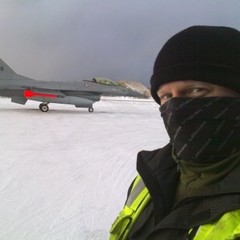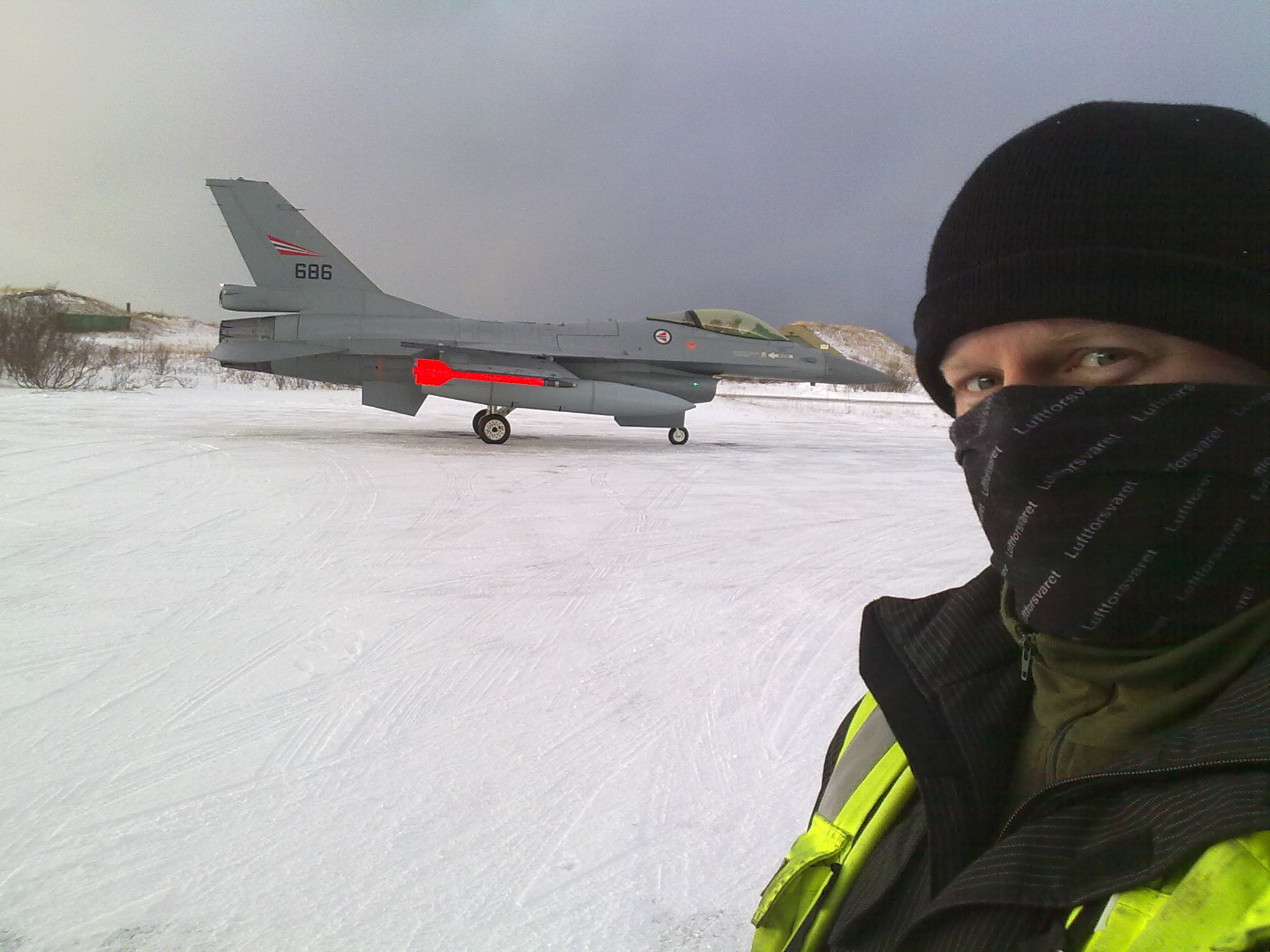-
Posts
48 -
Joined
-
Last visited
Content Type
Profiles
Forums
Events
Everything posted by NorgeNate
-
External wing tanks and their pylons are a single unit and are not separated except when in the fuel barn for inspection. They also jettison as a single unit not unlike the photo above of the F-22. Having the jet spawn with these pylons on and no tanks makes my left eye twitch something fierce...
-
I'm curious, since this post is labeled "Correct as is" Should a new topic be made since it's definitely NOT correct? Edit: Well, maybe not completely wrong. Checked the -1 and I'll be damned! That formation knob and wingtip dimming setting is new to me. I'll admit, we had the older light control panel in my day and I can't recall the system working that way. My bad! Something seems off about the upper IFR lights though. I don't think they are part of the fuselage circuit and only come on with the IFR switch. Edit2: Never mind me, I'm an uninformed idiot. Everything works as is except the lower tail nav light. I'll crawl back into the hole I came out of and disappear.
-
Unless there was an update to the real world lighting system in the jet in the last 8 years this is modeled wrong. The formation light knob can only control the white formation light just behind the NLG and the tail-flash lights on either side of the tail. The "master" switch controls power to the lighting system. In "off" everything is powered off. In "covert-all" all lights are set to NV levels. In "covert A-C" only the anti collision is in NV mode. In "covert form" only the formation lights are in NV mode. In "norm" all lights have power to them but can be controlled individually. The anti collision knob controls the different flash patterns. The flash-steady switch is for the wingtip, intake, and tail formation lights The wing/tail fuselage bright-off-dim switches are for the same formation lights but for day or night ops without NVG's The IFR knob is for IFR lights which are the pin light on the leading edge vertical stab and the aft facing light just aft of the canopy So, OP may be right. I still need to check myself though. EDIT: Just checked and yeah, the lighting system is not modeled correctly. EDIT 2: It appears that the tail light just above the exhaust is not working at all. That one is white (US) and blue/green (EU) and is part of the wingtip and intake light circuit.
-

investigating Fuel FLow Rate & External Tanks
NorgeNate replied to NorgeNate's topic in Bugs and Problems
My original complaint was about the xfer rates from the external tanks but now it applies to the total fuel flow rate as well. They have said it's a WIP but it's been a while now. I get that they have quite a bit to do and I won't pretend to know what happens behind the curtain but I thought 2 years would have been more than enough time. I'm even curious as to why the external wing tank model hasn't been modified yet. Most everyone knows that it's a single piece unit and not a seperate tank and pylon and when jettisoned the pylon and tank separate from the wing as one unit. -

investigating Fuel FLow Rate & External Tanks
NorgeNate replied to NorgeNate's topic in Bugs and Problems
Thanks Bignewy! Sorry, I didn't mean to come off as impatient. I was just curious if anything was being done. I understand all of the hard work going into to this sim and appreciate everything you guys do. Cheers! -

investigating Fuel FLow Rate & External Tanks
NorgeNate replied to NorgeNate's topic in Bugs and Problems
I hate to bump this but I just did a bit of a test and it looks like the fuel transfer rates have gotten worse. I was getting 80000 pph in full burner at altitude on the Nellis map. That's way off. It's been nearly 2 years since I posted this bug and not much has been done. Any word on this or is it still just WIP? Fuel Transfer Test.trk -
Yes, your belief is accurate. That is basically how it works. It's just the fuel flow rate from the internal tanks is much higher than the flow rate from the external tanks. Absolutely, but you would really need to fly in burner for quite a long time before any issues or imbalances were to happen. Yes I agree
-
Yes, I have. it's been a while though so who knows if it's in the works or not.
-
This is actually modelled wrong as of now. I hope they fix it in future updates. The CL fuel tank has a maximum transfer rate of around 18000 pph or 300 ppm. At 2010 lbs capacity it'll take approximately 6-7 minutes to deplete. The External wing tanks have a combined maximum transfer rate of about 30000 pph or 15000 pph each so even with 3 bags the combined external fuel transfer rate at seal level still could not keep up with the internal depletion rate. There is a warning in the -1 to not use burner for prolonged periods due to risk of trapped fuel or even a flame out. Hopefully they get this fixed soon.
-
With the seat in the safe condition the "CK SEAT" caution light does not illuminate. It operates fine with the LT TEST though.
-
Same issue here. To be fair, I haven't flown DCS in a few weeks since I've been flying the "real world" but sure enough, loaded up the F-18 and my profile was completely wiped. I tried to click on "load profile" but it was inop/non responsive. Quit the game and checked to see if the profiles were still in "saved games" and they were. Just no way to load them. I guess I need to rebind. Cheers!
-
I tried a basic search on this and not much came up. Is there going to be some sort of ID/tail-number system where the number can be either chosen by the player on a first come/first serve basis or automatically generated on spawn? It drives me crazy seeing several jets formation flying or flying in a package with many with the same number/livery. How can you differentiate between players in radio silence or in red vs blue with similar aircraft? Just an idea. :pilotfly:
-
I feel I may need to chime in here. First, this is not block specific. All F-16's do this. If I remember correctly there is a certain parameters in the maintenance manual that need to be met during an ops check. Upon selecting gear-up the gear and doors need to be up and locked within a certain amount of time. I want to say somewhere around 7 seconds or so. For this to take place the main gear needs to retract rather quickly (see above videos). To keep the main gear from slamming into the wheel well with too much force it is slowed down (again, see above videos) at a predetermined point by a metering valve. If it were to be allowed to fully retract at the initial speed there would be serious fatigue and wear on the up-lock hook assembly as well as the up-lock roller tabs which are incidentally part of the lower shock strut assembly and would be a huge PITA to change all the time due to cracks. The OP is right, it is slowed down. Do we need that modeled? Probably not. Would it be a nice attention to detail by ED if they implemented it? Yes it would. Cheers!
-
Cheers Tundra! I'm not sure you're getting what I'm saying or there may be some things being lost in translation but I think there is something that could be fixed in the editor. For example, I set an F/A-18C on a spot and link it to the carrier. I then copy and paste it to another spot. It doesn't stay or even go to that spot. It snaps to the center of the carrier. I then have to unlink it then move it, then link it again. Maybe it could be fixed. Not a big issue but something that would make things easier in the ME.
-
I've noticed when setting a single static object on the carrier there is no issues but when you copy and paste any object, that object then snaps to the center of the carrier icon instead of the location you wanted. Then you would have to select the icon under the carrier icon, deselect the carrier link, move it to the location you wanted then re-select the carrier link again. Small issue but annoying. Cheers! Amazing work guys and gals! Keep up the good work.:thumbup:
-
A small detail. The exhaust nozzle on the static Blk 50 jets are closed and should be open.
-
I've had the same issue. It's very intermittent and there is no crash log created that I can tell. I did do a fresh install, repairs, cleans, renaming "DCS.Openbeta" to "Temp", checked firewall settings, pagefile size etc etc. It still happens. Restart the PC and it works for a bit then the problem comes back. Any ideas on how to log this issue to trace what is wrong?
-
I've noticed that the external fuel tanks are feeding fuel too fast at full burner and low altitude. It is my understanding that each external wing tank feeds at approximately 15,000 lbs/hr (30,000 combined) and the centerline feeds at about 18,000 lbs/hr. It is a known thing to watch out for in the real world as being in burner too long could potentially starve the internal reservoirs causing a flame out or, at the very least, a trapped fuel condition. There are more in depth technical aspects to this but I think this bit of info will suffice. Cheers!
-
Good Question but I think the Blk 50's and up were built with the extra strength built in. I might be wrong but I have never seen a Blk 50 with "Beef-Up-Plates". There could be though... I take that back. I just did a search and there are quite a few pics of 50's with stress plates.
-
The gun exhaust door under the left forward strake doesn't appear to be modeled yet. I hope it's in the works. You can see it in operation in this vid
-
Yes, this is definitely the wrong animation. It looks like they have it pivoting in the middle. The pedals actually travel fore and aft on rails.
-
The fuel totalizer is reading 0 lbs on cold and dark startups. It should never read 00000 unless it just came out of "Phase" or the fuel hangar/fuel system maintenance. Usually, if it's the first flight of the day, there would have been a "power-on" check by CC's to verify quantities and it would be reading it's actual quantity. After engine shutdown the totalizer will continue to indicate the remaining fuel from the last flight/maintenance run up to the point that it is refueled and external power/engine start is performed.
-
Great pic.
-
I noticed this was modeled wrong in the video Wags just posted recently. When jettisoning the external wing tanks the tank and pylon separate as one unit. The centerline is opposite in that it separates from a pylon that is bolted to the keel. Both wing and centerline tanks separate with the nose of each tank being pulled down via gravity and air flow pivoting on the pivot fittings at the rear of the tanks. These pivot fittings help prevent inadvertent contact with the aircraft after jettison. Put very simply. Cheers.




